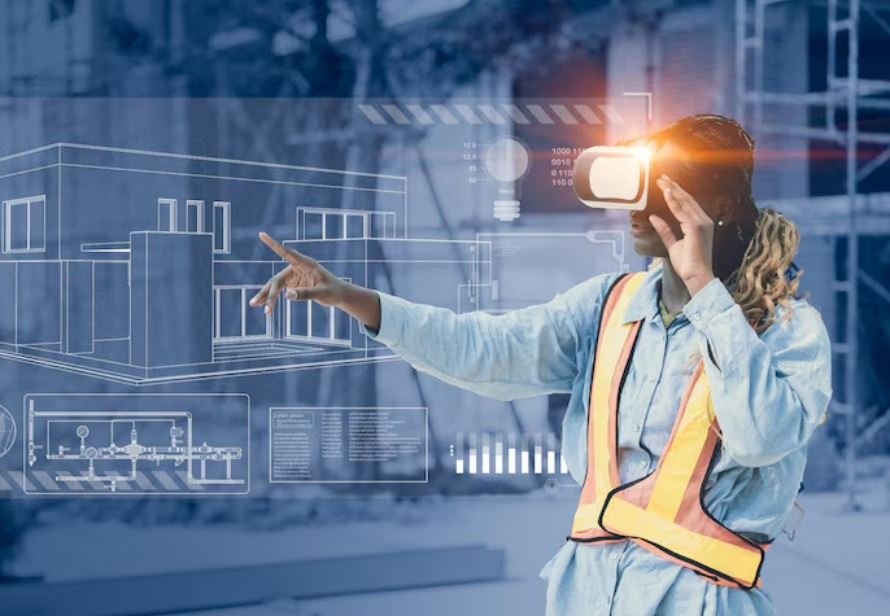
AI’s silent recalibration of old routines has caused concrete, which was once thought of as a stiff giant that could not withstand much negotiation, to begin acting like a responsive partner. Lately, engineers have told me that this change is remarkably like watching an orchestra tune itself before the conductor even enters the stage, demonstrating an intelligence that senses rhythm before any baton moves. By means of embedded sensors, predictive analytics, and digital forecasting, the content is progressively gaining a voice of its own, discreetly fixing errors, modifying timing, and providing insights that seem incredibly useful.
Remote operations during the pandemic compelled teams to reconsider how coordination should proceed. By utilizing advanced analytics, businesses found that artificial intelligence (AI) could precisely rearrange construction schedules with a level of accuracy that surpassed human intuition. According to one project manager, an AI-generated timeline found a small sequencing misalignment that he acknowledged he would have missed, preventing a week-long delay. His face conveyed the kind of modest awe typically shown to a gifted apprentice who solves a perplexing puzzle out of the blue.
| Key Area | Related Information |
|---|---|
| Core Theme | AI reshaping concrete construction |
| Smart Materials | Sensors capturing curing and temperature data |
| Mix Innovation | AI-optimized blends reducing cement and emissions |
| Planning Shift | Predictive scheduling and automated insights |
| Safety Tools | AI cameras detecting hazards in real-time |
| Sustainability | Lower carbon impact and reduced material waste |
| Industry Movement | 3D printing, robotics, and digital QA/QC |
| Leading Voice | Concrete.ai and similar innovators |
| Major Benefit | Faster decision-making and greater precision |
| Reference Link | https://www.forbes.com |
Pressures to be more sustainable have increased over the last ten years, and the cement industry was particularly affected. The ability of AI-driven mix designs to drastically lower cement content without sacrificing structural strength made it possible for alternatives like fly ash or slag to take the load. I remember speaking with an environmental engineer who said the optimized blend was extremely adaptable, acting as a recipe that can be changed to suit project requirements without sacrificing durability. In a personal analogy that demonstrated how strongly this innovation resonates with those creating it, she likened it to enhancing a family dish without sacrificing its original flavor.
Teams are now getting real-time updates on internal temperature, strength gain, and curing rates by integrating data from sensors embedded in concrete. Adjustments that previously required guesswork can now be made instantly thanks to these metrics. A seasoned supervisor revealed that he experienced a wave of gratitude the first time he saw the sensor panel notify him of a curing inconsistency, as though an invisible coworker had tapped him on the shoulder. This digital intuition turned out to be very evident, providing early warnings that prevented expensive cracks and rework.
Innovators in Austin, Dubai, and Los Angeles are combining robotics, data-driven materials, and automated insights through strategic partnerships to create construction processes that feel noticeably quicker and more flexible. Visitors are amazed by the consistency with which Austin’s 3D-printed neighborhoods, sculpted by robotic arms and AI-optimized Lavacrete, rise. The process, according to one architect, is like watching a potter’s wheel shape a house layer by layer, displaying a craftsmanship that is both antiquated and cutting edge. An equally strong argument is made by Dubai’s push for regulations requiring digitally guided construction. The emirate has established a model where construction becomes extremely efficient while remaining remarkably durable against harsh climates by coordinating technological ambition with public goals.
AI’s contribution to reducing cement use has a strong emotional resonance in light of climate concerns. AI now lessens the emissions from cement production, which has long been criticized for doing so without compromising structural integrity. This delicate balancing act seems especially novel, representing a time when environmental responsibility and processing power coexist. Speaking with proponents of sustainability reveals a common hope that AI-enhanced materials may change long-held beliefs about the environmental impact of construction.
Teams have observed a smoother distribution of work, fewer bottlenecks, and a significant decrease in downtime since the introduction of AI-based scheduling tools. Once a disorganized jumble of spreadsheets and gut feeling, the planning stage now looks more like a well-informed simulation where hazards are identified before they become more serious. Recalling how the software foresaw a supply bottleneck three weeks prior to the shipment’s due date, one site coordinator chuckled and said the alert felt almost psychic. His laughter demonstrated how revolutionary these tools have become, especially in situations where success is determined by timing.
Drones and cameras with AI capabilities have also become incredibly resilient safety monitoring partners. Long before the human eye notices them, they identify dangers such as equipment overheating, dangerous proximity, and poor posture. The team took early action after a thermal camera detected a crane component overheating as a result of the ongoing desert heat during a summer project in Riyadh. Later, the safety director described the system as incredibly dependable and surprisingly intuitive, stating that the alert probably prevented a catastrophic failure.
Proving the viability of digital solutions to traditionally conservative sectors is often a challenge for early-stage startups entering the construction tech space. However, trust is swiftly earned by those who exhibit predictive modeling and automated quality control. Iterative training has shaped their platforms, which analyze large datasets to find deviations more quickly than inspectors can visit the location. In large developments, where human fatigue used to result in missed mistakes, this digital oversight feels especially advantageous.
Material tracking is now more accountable and transparent thanks to the integration of blockchain technology. Every batch of concrete is digitally signed to guarantee that its provenance, composition, and path are recorded. This approach establishes a very transparent chain of trust, enabling developers, regulators, and clients to confidently verify claims.
During interviews, celebrities who support climate-driven initiatives have begun to mention AI-enhanced content. Just as clean-energy vehicles gained popularity after being adopted by actors and athletes, the attention generated by public figures elevating such innovations creates cultural momentum. Their impact heightens interest, particularly among younger audiences who view sustainability as a defining value rather than a niche issue.
This transition has an emotional texture that is uncommon in construction thanks to the personal accounts of engineers and site workers. During a night shift, I remember one foreman telling me how a sensor alert stopped an early pour. He claimed that it gave him a sense of security, as though the system was watching over his group. That genuine moment illustrates why these instruments are so effective—they foster trust and protect dignity.
AI-driven tools are transforming blueprints from static drawings into dynamic, responsive documents that listen to conditions and instantly modify recommendations through strategic design decisions. The blueprint is transformed into an intelligent script by each layer of data, which streamlines processes and frees up human talent for tasks that demand insight rather than repetition.
